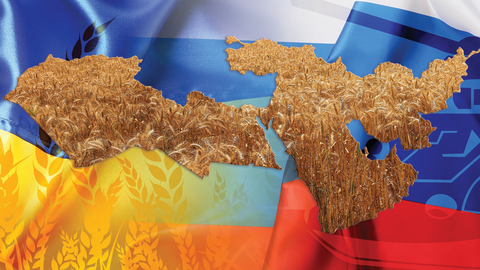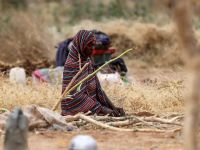Looking at every possible measure available, we can prove nothing more than the fact that our world is living through challenging inflation that is pushing us closer than ever to a major food crisis, one suffered the most by countries with already existing financial hurdles.
A recent report by the World Bank has stated the obvious; we are living amid a major food crisis. The report, however, has delved into details in terms of the countries that are feeling the most severe consequences as a result of months-long inflation that has affected the most basic needs in every corner of our world.
Source: Twitter
The World Bank warned that around 18.6 million people in the Horn of Africa are feared to be experiencing acute food insecurity and malnutrition, which makes the highest famine threat in 40 years.
Before we get to examine the countries affected by the food crisis the most, we need to take a look at the many factors that have spurred this momentous global emergency.
While most people would name the Russian invasion of Ukraine as the only reason behind the ongoing inflation that has not spared food products, particularly as the 6-month old war has had a direct impact on wheat and corn production, it is important to note that this conflict is only one of the main reasons behind the crisis.
Years before the Russian war on Ukraine started, the world had been battling the COVID-19 pandemic, which had a long-lasting impact on the global economy.
Those factors in addition to bad management, corruption, and policies that turned blind eyes to the possible consequences of climate change on the different industries, particularly agriculture, have all led us to the current calamity.
Countries Struggling the Most With Food Inflation
Among the many findings of the World Bank's report is a notable rise in food inflation prices in middle and low-income countries, despite its sharp increase in high-income countries.
Between March and June 2022, food prices went up in 93.8% of low-income countries, 89.1% of lower-middle-income countries, and 89% of upper-middle-income countries.
The report also found that the most affected countries are located in Africa, North America, Latin America, South Asia, Europe, and Central Asia.
YoY% Nominal food inflation - March to June 2022
1- Lebanon (332%)
2- Zimbabwe (255%)
3- Venezuela (155%)
4- Turkey (94%)
5- Iran (86%)
6- Sri Lanka (80%)
7- Argentina (66%)
8- Suriname (55%)
9- Ethiopia (38%)
10- Moldova (34%)
YoY% Real food inflation - March to June 2022
1- Lebanon (122%)
2- Zimbabwe (23%)
3- Iran (33%)
4- Sri Lanka (26%)
5- Turkey (16%)
6- Colombia (14%)
7- Hungary (10%)
8- Rwanda (10%)
9- Burkina Faso (10%)
10- Somalia (10%)
YoY% Food inflation in the Middle East and North Africa 2022
One of the main changes that affected food prices in the MENA region during 2022 has been the disruption of wheat exports from countries in the Black Sea region. According to the World Bank, most MENA countries rely heavily on wheat products from Ukraine and Russia, which has pressured food prices to spike as follows;
1- Lebanon (216%)
2- Syria (71%)
3- Yemen (43%)
4- Egypt (24.2%)
5- Morocco (9.5%)
6- Palestine (8.1%)
7- Iraq (7.6%)
The report also highlights MENA governments' attempts to find alternative sources for wheat and other food products, to avoid acute food shortages in case the crisis in Ukraine persists any longer, including an agreement sealed by Eygpt to receive 180,000 tons of wheat from India for around six months.
Moreover, the World Bank mentioned that the Istanbul agreement signed between Russia and Ukraine under direct supervision by the United Nations, according to which wheat exports from Ukraine can be resumed, to ensure wheat supplies in many regions around the world.









